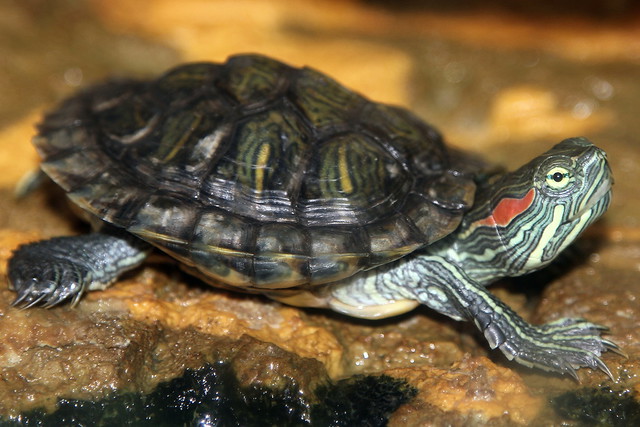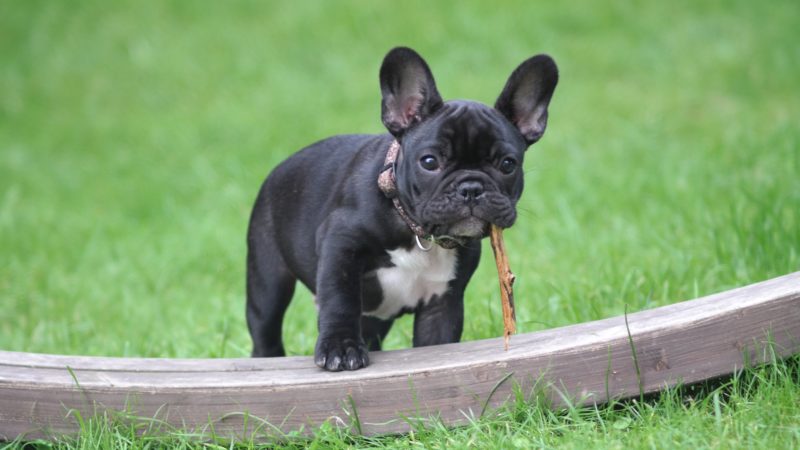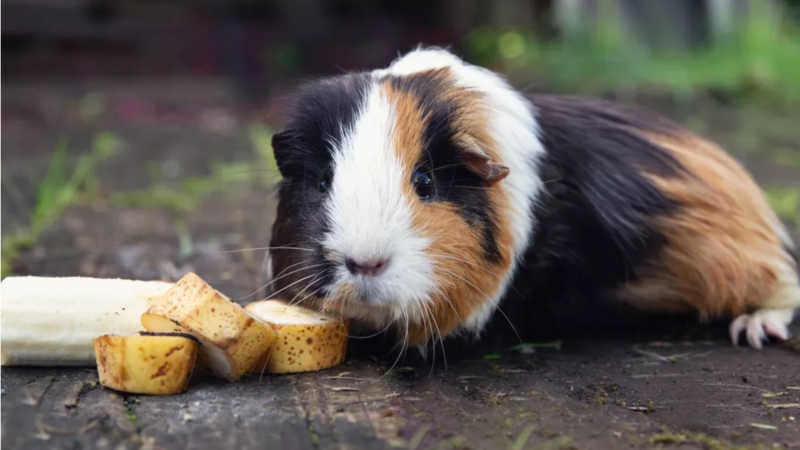Baby Red-Eared Slider Turtle: Diet, Health and Care

Have you ever seen a baby red-eared slider turtle? This baby red slider turtle is a famous pet in the United States and, however, a most invasive turtle. It is the world’s 100 most invasive species registered in the International Union for the Conservation of Nation. If you are looking for a pet turtle, this is the best option for you. Here are some facts and information you need to know about this species.
Origin of Baby Red-Eared Slider Turtle
The baby red-eared slider turtle gets the name because of the small stripe around its ears. It belongs to the order Testudines that contains almost 250 turtles. This turtle is native to the southern United States and northern Mexico.
The baby turtle is 40cm in length and lives upto 20-30 years. Female species are larger than the male turtle; however, the male has longer claws on their feet than the female. Ears of this species help to slide quickly on rocks and logs into the water. They need larger rooms like a large tank and an appropriate diet to stay healthy. You need to be careful about their diet, behavior, and body temperature.
Diet for the red-eared slider turtle
Baby red-eared slider turtle needs non-toxic aquatic plants, sliced vegetables like carrots and squash, and leafy veggies. However, they consume earthworms, goldfish, and other insects as well. Always remember that they drink fresh, clean, and chlorine-free water. Baby red-eared slider turtles are born carnivorous and later they become omnivorous. Remember to feed your turtle daily and make sure to feed them outside their home. However, avoid overfeeding protein, it can cause kidney issues in your turtle.
Here is a list of vegetables and fruits that you can serve your turtle :
- Peas
- Zucchini
- Squash
- Green beans
- Papaya
- Blackberry
- Strawberry
- Watermelon
- Blueberry etc.
Health and Behaviour
A healthy baby red-eared slider turtle has
- A clear nose and vent.
- eats regularly
- Healthy skins with no sores.
- Very active and alert.
However, if you notice any bad symptoms such as
- nose or mouth discharge.
- Runny nose
- Squeeze
- Discoloration or spots on the skin
- Swelling behind tympanum
- Weird faces.
These symptoms tell you that the red-eared slider turtle is not well and immediately contact your veterinarian.
Housing
Outdoor houses are not common for turtles; ponds are the natural setting for the red-eared slider turtles. You can build a pond for your turtle as big as you like and add plants and fish into the pond. Building and maintenance of the pond are complicated, therefore you can keep your turtles in an indoor aquarium.
An outdoor pond needs a lot of maintenance, such as filtration, water quality, leaf litter, and rain can make things complicated. If you are housing your turtle’s aquarium indoor, you’ll have to provide light and heat. Do you know floodlight clam fixtures are a great source of heat for the baby red-eared slider turtle?
Always keep in mind that the lights are secured so that they don’t fall into the water. Instead of using floodlights, you may use regular incandescent bulbs.
Baby red-eared slider turtle tank
As you know, aquariums are the most common indoor habitat for red-eared slider turtle. However, you need to know some basic things such as:
- For a baby red-eared slider turtle, you need 20 gallons of water, and for an adult turtle, 40 gallons of water is enough. They need a large amount of water so that they can float easily; for example, a four-inch red-eared slider turtle needs water depth between 6-8 inches and need dechlorinated water. You can use stock tanks; this tank is suitable for both indoor and outdoor.
- The red-eared slider turtle needs a basking area so you can add rocks, a log of cork bark, and many more. Many commercial products are available that offer the red-eared slider a small area to bask on.
- Always check the water temperature in the red-eared slider turtle tank with a floating thermometer, 72-76 F is the perfect temperature for the adult red-eared slider turtle, and 78-80 F is for hatchlings and small juveniles.
- One of the most important things is that you should change water weekly to maintain water quality. Moreover, try to change 20% of the total tank’s volume in a week, and you can do an ammonia test because ammonia is the most harmful by-product of waste in the water. It can burn the skin and eyes of your turtles.
- You can add various plants because plants are the best addition to your turtle’s diet.
- Keep your tank in that area where your turtle doesn’t experience high temperature or sunlight. Keep in mind that direct sunlight can overheat the tank that causes algae growth.
Red-Eared Slider Care
Caring for your red-eared slider turtle is not a big deal; however, it requires a special diet, lighting, tank specifications.
You should conduct a physical examination of the red-eared slider turtle that you want to buy. Remember that healthy turtles should be active and alert. For your physical examination, hold a turtle, Is it heavy or not? If the turtle is heavy, that means the turtle is sick. After that, pull one of his legs, and see whether he reacts quickly or not because the sick one always reacts slowly. Examine the whole body whether the turtle has any dark spots or not; if you find any dark spots, that means the turtle is sick.
As you know, your red-eared slider turtle breathes air, not water, and they are dependent on the temperature. So if you buy them, then gently place them in a plastic container or small shoebox. The adult turtle might need padding, so your container has air holes covered with a lid. If you live in a cool area, then insulate your container with a styrofoam box with holes.
Final Words
Baby-red eared slider turtles are adorable and entertaining, and the size of this species is small compared to other turtles. These are widely available at pet shops so, before buying these species, always keep in mind all the facts and information mentioned above. It is important to take proper care of your baby turtle to ensure good health. If you find this article helpful, don’t forget to leave a comment.






